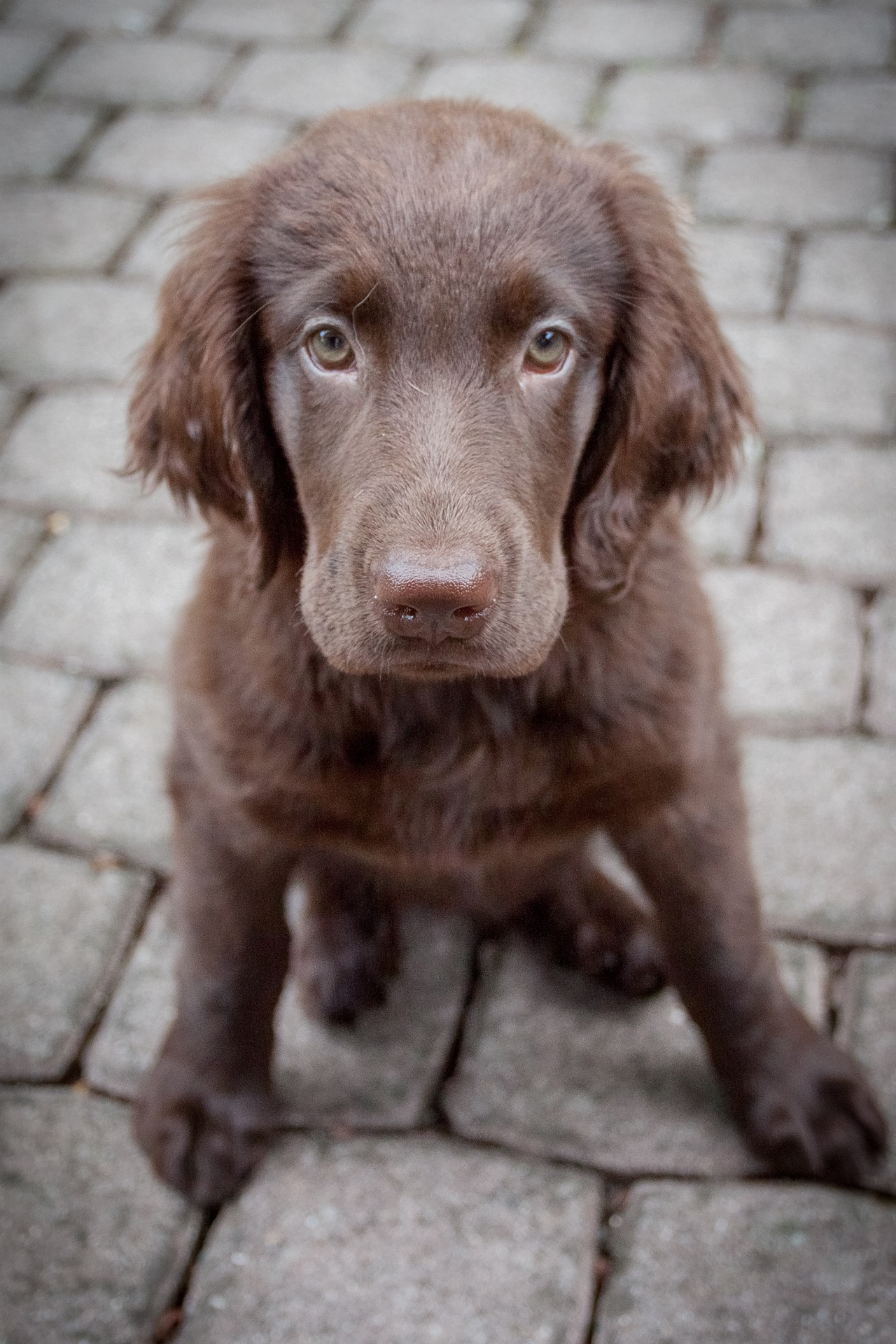Toilet Training the Flat-Coated Retriever

Toilet training, also known as housebreaking or potty training, is a crucial aspect of raising a well-behaved Flat-Coated Retriever. These intelligent and eager-to-please dogs can become reliable in their bathroom habits with consistent training and patience. Here, we'll provide a guide to help you successfully toilet train your Flat-Coated Retriever puppy.
Start Early
Begin toilet training as soon as you bring your Flat-Coated Retriever puppy home, ideally around 8 to 12 weeks of age. Puppies have smaller bladders and need to eliminate more frequently than adult dogs, so early training is essential.
Establish a Routine
Consistency is key to successful toilet training. Establish a regular schedule for feeding, playtime, and bathroom breaks. Take your puppy out to the designated potty area:
First thing in the morning.
After meals.
After play or exercise.
Before bedtime.
This routine helps your puppy understand when and where they should relieve themselves.
Choose a Designated Potty Area
Select a specific area in your yard or outdoor space where you want your Flat-Coated Retriever to eliminate. Using the same spot consistently helps them recognize it as their bathroom area. Avoid changing the location during training.
Use Positive Reinforcement
When your puppy eliminates in the designated area, offer enthusiastic praise, treats, and affection. Positive reinforcement creates a positive association with going potty in the right place.
Supervise Closely
Keep a close eye on your puppy indoors, especially during the initial stages of training. Watch for signs such as sniffing, circling, or whining, which may indicate they need to go out. If you catch them in the act of eliminating indoors, interrupt them gently (but not harshly) and take them outside immediately.
Crate Training
Crate training can be an effective tool for toilet training. Dogs generally avoid soiling their sleeping area, so a correctly sized crate can help prevent accidents. Take your puppy outside to the designated potty area as soon as you release them from the crate.
Be Patient
Toilet training takes time, and accidents are part of the process. Do not scold or punish your puppy for accidents; this can create anxiety and confusion. Instead, focus on reinforcing positive behaviors.
Clean Accidents Thoroughly
Accidents can happen, so it's important to clean them up promptly and thoroughly to eliminate any lingering odors that might attract your puppy back to the same spot. Use an enzymatic cleaner specifically designed to remove pet odors.
Transition to Longer Intervals
As your Flat-Coated Retriever puppy grows, they will be able to hold their bladder for longer periods. Adjust your bathroom break schedule accordingly to accommodate their increasing capacity.
Be Consistent
Consistency is the key to success in toilet training. Maintain the routine, provide positive reinforcement, and be patient with your puppy. Over time, your Flat-Coated Retriever will develop reliable bathroom habits.
Remember that every puppy is unique, and some may take longer to grasp toilet training than others. It's essential to adapt your approach based on your puppy's progress and individual needs. With patience, consistency, and positive reinforcement, you can help your Flat-Coated Retriever become a well-trained and reliable companion when it comes to bathroom habits.
If you encounter specific challenges or if your puppy seems to have difficulty with toilet training, don't hesitate to seek guidance from a professional dog trainer or behaviorist who can provide personalized advice and solutions.
Flat Coated Retriever puppies for sale
- Find Flat Coated Retriever puppies for sale in ACT
- Find Flat Coated Retriever puppies for sale in NSW
- Find Flat Coated Retriever puppies for sale in NT
- Find Flat Coated Retriever puppies for sale in QLD
- Find Flat Coated Retriever puppies for sale in SA
- Find Flat Coated Retriever puppies for sale in TAS
- Find Flat Coated Retriever puppies for sale in VIC
- Find Flat Coated Retriever puppies for sale in WA